I started to analyze the K4r. The first thing I did is to dump the contents of the Firmware EPROM and the Wave ROMs.
I dumped the firmware just to verify that the content on the chip matches the firmware image that I already had on disk, which it does.
Wave ROM dumps
In contrast to the K1, the K4 has three Wave ROMs in total.
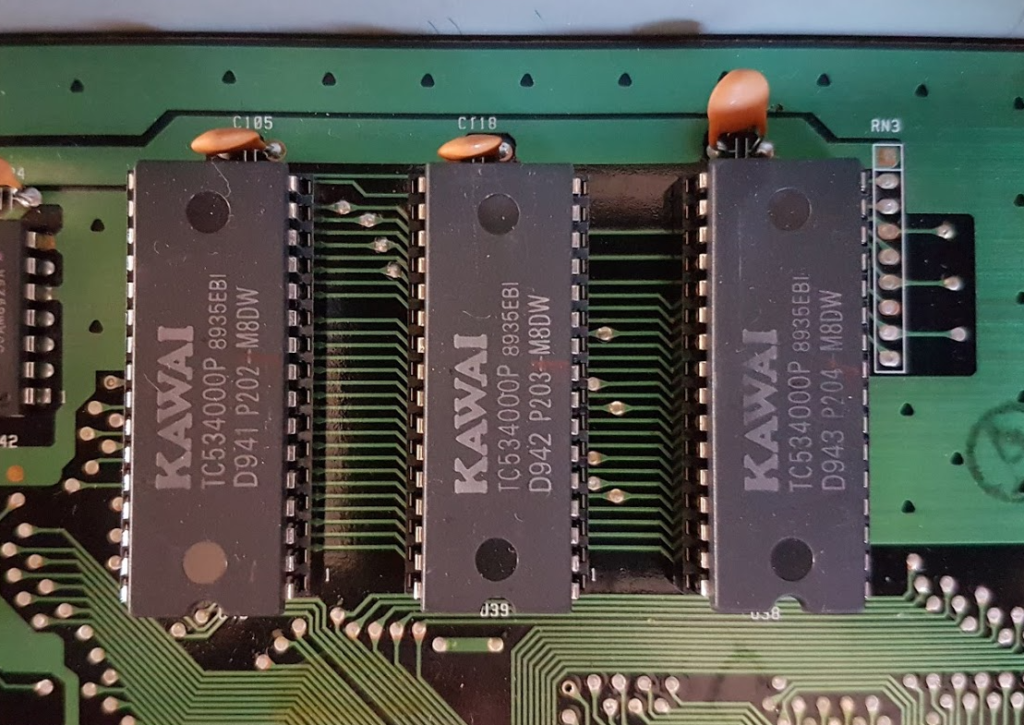
From left to right: Kawai K4 Wave ROM chips U40, U39, U38
Nothing unexpected so far. As the K4 claims to be a 16 bit sampler, it was expected that it needs more storage for the samples.
After having dumped all of them, which was very easy due to them being socketed this time, I loaded them into my wave editor to take a first look. I imported the raw data as 16 bit and listened.
Analyzing Wave ROM chip data
While I had no issues with chips U39 and U40, chip U38 (the rightmost one in the picture above) sounded like garbage. What I also noticed is, that the former two chips sounded a bit distorted, had a lot of noise and the pitch seemed to be pretty high.
I looked at the data in a hex editor and was surprised to find content that much more looked like 8 bit samples rather than 16 bit samples. This can be seen by adjacent bytes constantly rising or falling, as below:

I changed the import format and loaded them again.
To my surprise, chips U39 and U40 sounded just fine now! A little bit of 8 bit noise, but nothing unexpected.
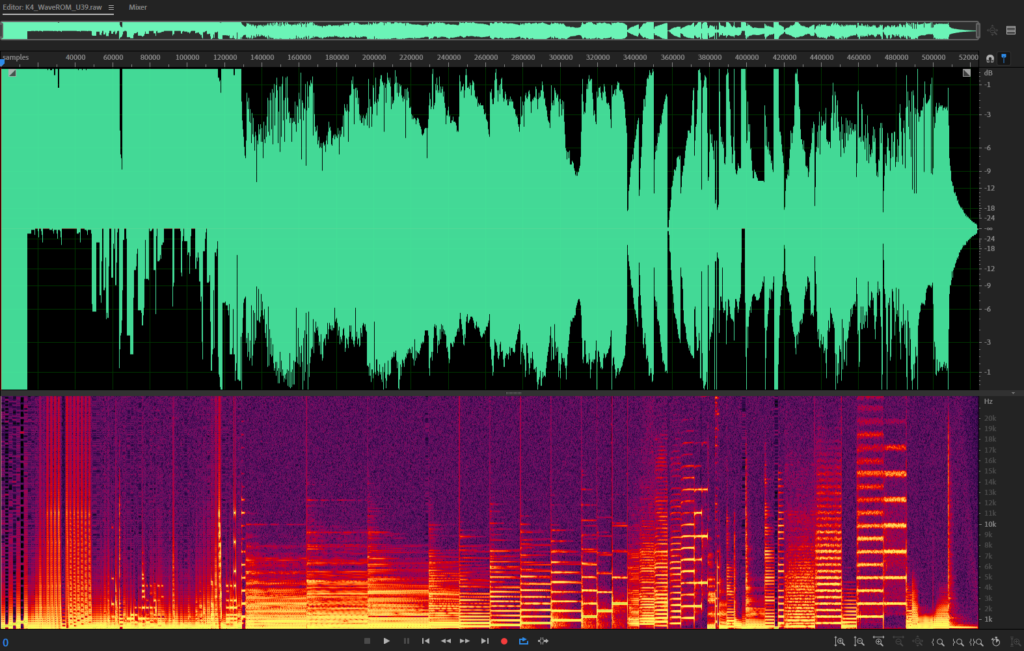
I guessed that the K4 somehow creates 16 bit samples by combining the contents of the chips together. But I had three chips only, where are my remaining 512k of data that I would need? Maybe the samples are 12 bit?
Chip U38 is special
I took a closer look at chip U38, the chips that only produced random noise so far.
The end of the chip data raised my attention as it looked like sample data:
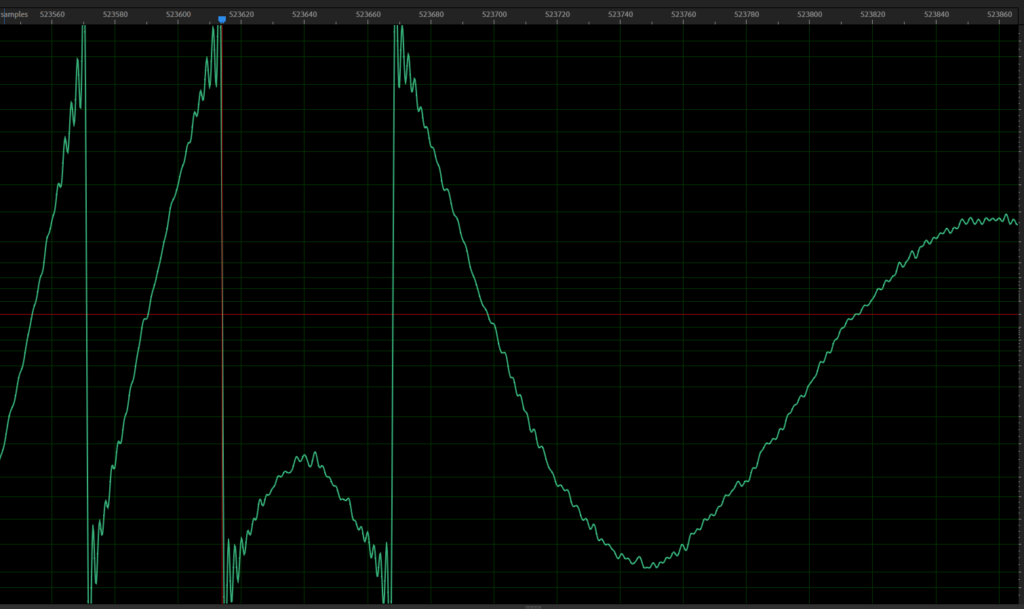
What do we see here? We see eight least significant bits of a sample. This proved that this is not „random“ data but actually raw sample data. It furthermore cleared up that this chip does not contain a nibble for each of the other two chips to create 12 bit samples.
If this chip contains the LSB of another chip, to which chip does this data belong?
This can be tested by looking at the frequency spectrum of all three chips. Obviously, for chip U38 this is mostly noise, but not everywhere. For U39 and U40, we see regular frequency spectrums of sample data.
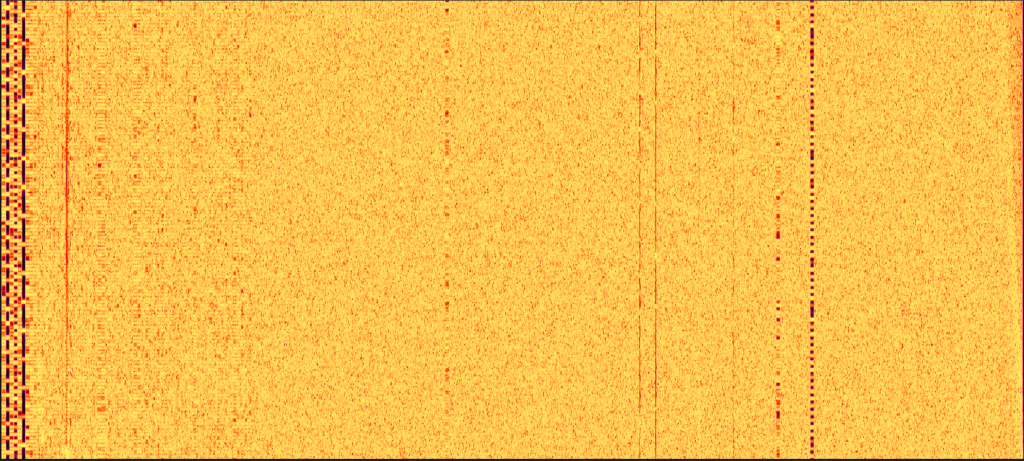
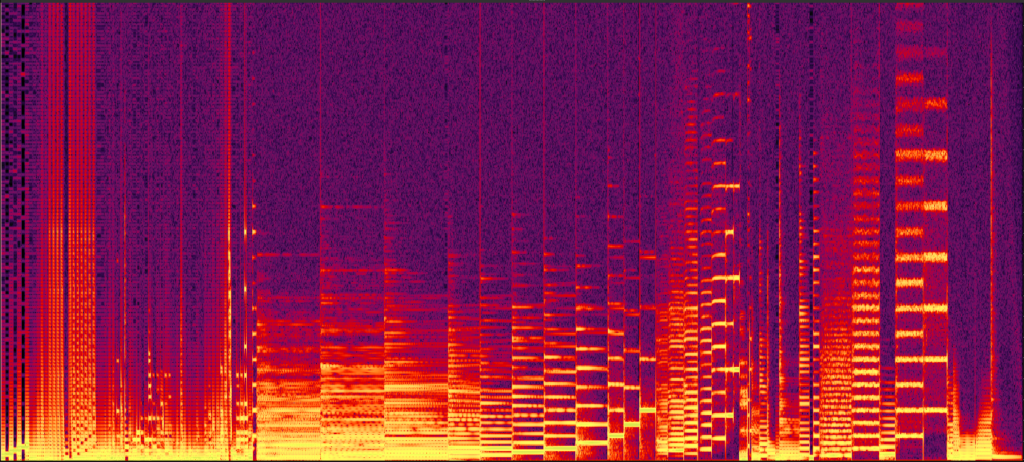
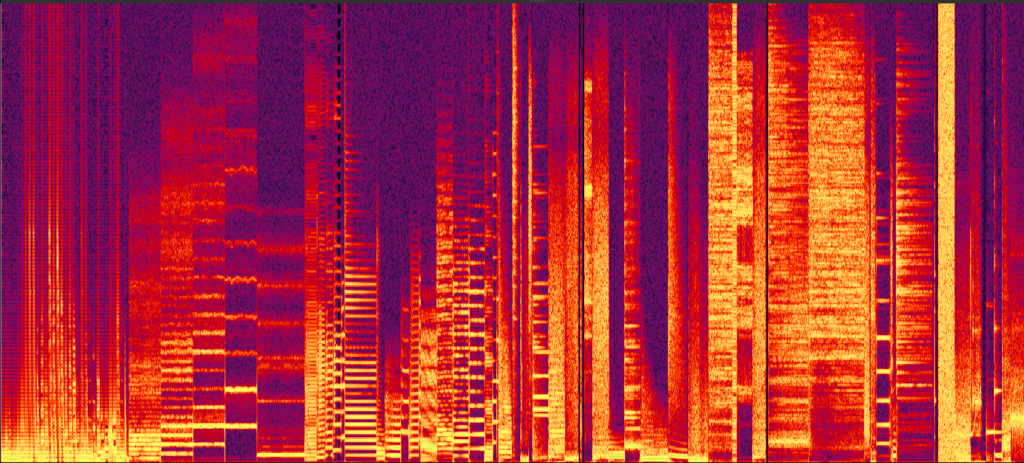
Do you see it? There is a relationship between the two chips U38 and U39.
Getting 16 bit samples out of two chips
I wrote a small program which combines the contents of these two chips to form 16 bit samples and loaded the result into my wave editor.
Gotcha, now we have 16 bit samples. If you look at these two pictures, you can see the difference immediately. The lower picture has got a much lower noise floor and it sounds much cleaner.

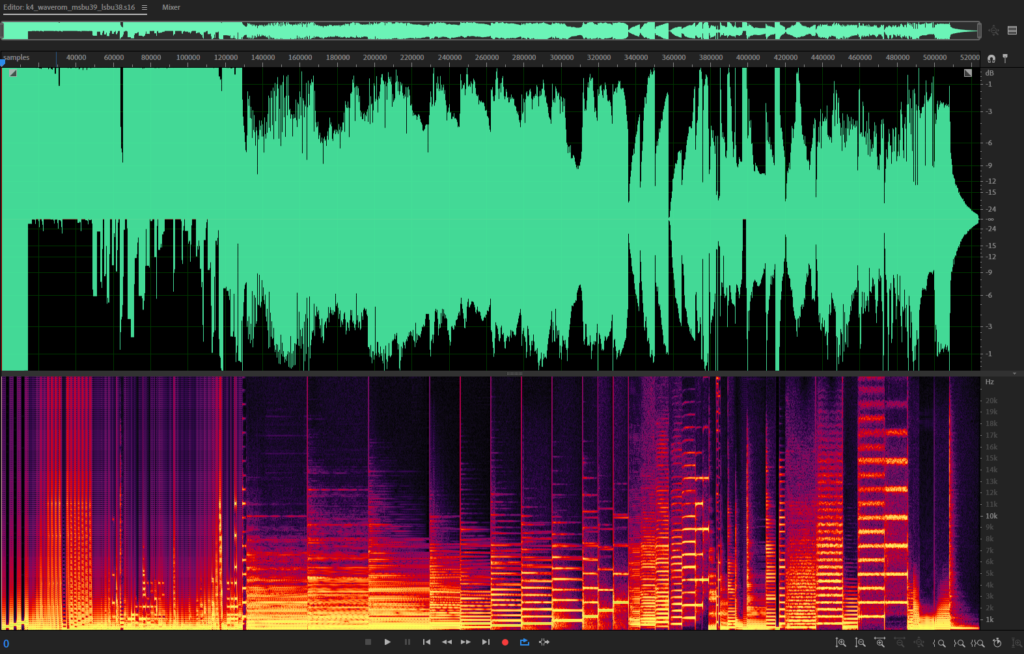
What about chip U40 then? I also tried to merge chips U38 and U40 but this did not work out, as expected. As there is no data left, the conclusion is that chip U40 is used as a source for 8 bit samples.
Conclusion
Although Kawai claimed that the K4 is a 16 bit synthesizer, this is only partially true as only half of the sample data is 16 bit, the other half is 8 bit.
What they did to hide it is to move all samples with lots of noise, like flutes, the choir, cymbals, snares and others to chip U40 which holds 8 bit sample data.
Samples without lots of noise like the piano, basses, acoustic guitar and others are stored as 16 bit samples. Chip U38 carries the 8 bit LSB while chip U39 8 bit MSB.
What I also found out is that the single cycle wave forms have more multisamples and the PCM wave forms are now partially multisamples, too! Which should give a quality boost compared to a K1.
Nevertheless, the K4 is more similar to a K1 than one might think. Most chips are identical, the firmware dumps look quite similar (same velocity curves, KS curves etc.) and the K4 even has got lots of 8 bit samples still!
Stay tuned, more to come! 👍
Extremely interesting! Thank you!
Viel Erfolg
mal wieder sehr spannend
Der K4 war für mich damals unbezahlbar, würde mich freuen, wenn ich ihn als VST doch nochmal „in die Finger“ bekommen könnte. Der K4 hat so einen speziellen Sound, wie der D-50 von Roland damals.
Vielen Dank und ich freue mich auf das Ergebnis 🙂
Ich warte sehnsüchtig auf das k4 plug-in. Hier, wurde ich natürlich was dafür bezahlen. Hoffentlich ist das Projekt noch aktuell. lg 🙂
This is really great.
I can’t wait to see your research about filter design in this case. At times, Kawai were kind of „doing their own thing“ with digital filters. See the filter in the Kawai K5000 for a different example.
That means K4v is on the way…
If I’m teleporting into the future, the first thing I’ll do is check if you’re ready with the VST version of K4. This is one of my favorite synthesizers, ideal for styles like darkwave and other „dark“ or dream styles. I know it will be very difficult to make the same filters, but I’m keeping my fingers crossed that you will succeed. My admiration for K1, great job. I can’t wait to read in the group on Facebook that you are ready with the emulation of K4, this will be a really wonderful day for me.
Super! Als ehemaliger K4R-Besitzer (Anfang 90er) bin ich verdammt heiß drauf.